ORIGINAL 2013 BLOG ENTRY FROM OPENSALON.COM FOLLOWS BELOW
David Bowie’s Labour Day Weekend concert in 1983 at Toronto’s CNE Stadium remains the most anticipated and exciting show I’ve ever attended. He was on his global Serious Moonlight tour for his worldwide smash hit album, Let’s Dance, with the great Rough Trade opening the show and warming up the troops.
I discuss the show itself in Part 2—22b. (EP 29b) Let’s Dance: David Bowie with Rough Trade, CNE Stadium, Toronto, Ontario, Canada, Saturday September 3, 1983. First, however, in this prelude episode, I not only take an in-depth journey through his recording career from 1964’s “Liza Jane” through 1983’s Let’s Dance but also through the 1970s themselves.
In particular, I examine the era’s rock music and how it intertwined socio-culturally throughout the decade as marginalized communities broke through and asserted themselves; Bowie’s influence on the ‘70s; and his seismic impact on me and many other outsiders during this era.
Tune in for radio oddities, shag rugs, shag haircuts, satin flares, platform shoes, and personal liberation.
Next On Stage –> This is the big one! THE ultimate! The single most anticipated show I ever attended, when I—along with my co-hort Miss Beach—and 60,000 other fans, all of whom who were going Absolutely Freakin’ Bananas, moseyed on down to a packed CNE Exhibition Stadium during a sweltering Labour Day weekend in 1983 for David Bowie.
He was on his global Serious Moonlight tour for his worldwide smash hit album, Let’s Dance, with the great Rough Trade opening the show and warming up the troops.
On the exact same weekend a year earlier, I had seen The Clash at this same venue (EP 18). Now I was back and seeing an even more hotly anticipated show. And he surpassed my expectations.
Join me in returning back to this CNE show on that gorgeous Labour Day weekend in 1983—ending one of the most memorable summers of my young life with an unforgettable climax.
Tune in for being caught up in the rush of crushing crowds, Hamlet references, bamboo steamers among the Bowie masses, and the most exciting show of my life.
Listen to it below and also click through to read the original blog entry, 22. (EP 28) Let’s Dance: David Bowie with Rough Trade, CNE Stadium, Toronto, Ontario, Canada, Saturday September 3, 1983.
ORIGINAL 2013 BLOG ENTRY FROM OPENSALON.COM
Lightning struck twice for me shortly after I turned 10. 1972 was bleeding into 1973, and I was thrilled to now be part of the double-digit-age clique, with that majestic 1 planted firmly in front of the stalwart 0 in all its binary glory. The yellow brick road to Teenageville, and then onto Adultia, stretched out before me like gleaming candy. I was excited to be starting my journey, one with a down-the-line jackpot of any manner of enticing Pandora’s Boxes filled with mature delights — mature as envisioned by my still-naive-yet-overactive Grade Five imagination, anyway.
Achieving this 10-years-on-planet milestone will forever be twinned for me with the discovery of two new songs — and artists — that would have an instant and enduring influence on my musical tastes, and beyond.
Now here’s where the amazement of that double lightning comes in, namely that I made these discoveries via a most unusual avenue for me: the radio.
“Why should that be an oddity?,” you say. Isn’t that a natural turn of events for most young’uns, particularly back in the day of double-knit leisure suits, Linda Lovelace, oil shortages, and Paul Henderson’s winning goal for Canada against the Russians?
For many, probably, but that’s not my story or experience. While music obsessiveness tends to hit folks in their teens — often locking in with a succession of coming-of-age experiences during those teen and young adult years — I by all accounts arrived into this world a fully formed tunehead.
David’s ch-ch-changes ’65-’66: “Take My Tip” was his first self-penned tune, recorded by his blues band, The Manish Boys It was the b-side of their only single, a cover of Bobby “Blue” Bland’s “I Pity the Fool” featuring a terrific guitar solo by then-sessionman Jimmy Page. Next, it was on to his freakbeat group Davy Jones and The Lower Third who then became David Bowie with The Lower Third after his name change. He officially launched his solo career as David Bowie with the April 1, 1966 release of his debut single, “Do Anything You Say” b/w “Good Morning Girl.” (All label scans by VA, from my collection)
I grew up in a music-mad household via decade-older siblings who, luckily for me, had great taste. Many of the records that arrived and accumulated in our home tended toward rock’s slipstream of the day, with a particularly keen interest in what was coming out of the home country of everyone in my household save yours truly, the UK. I’ve been told endless stories by my parents, aunts, uncles, cousins, sibs and family friends about how I was a magnet for records and music from the start, with my folks recalling how I could correctly identify 45s when asked to fetch a requested selection even prior to my being able to read — even when the labels were the same.
I start having fragments of music-related memories beginning circa 1967 and onwards, and having a love affair with the radio isn’t overly part of them. Instead, I had a love affair with the turntable and all those gleaming pieces of seven and twelve inch flat black vinyl orbs that found their way into my home and onto it. Once my memory banks become overall much clearer with the dawn of the ‘70s, my radio recollections are primarily of a lot of AM fluff and, later, FM plod.
It would certainly be an overstatement to say I hated everything streaming in via the AM of FM dials. In particular, I loved a lot of r&b/soul/funk beaming across the airwaves, being a genre that didn’t receive a lot of airing in my more rock-based home (even then, that could be more down to faithful weekly viewings of Soul Train throughout the early-to-mid 1970s). There were also many songs here and there that I enjoyed from that time too, with plenty of catchy throwaway pop. But, overall, the preponderance of stuff that I liked coming in via both signals tended to parrot the more popular artists of the day who were already staples at Chez Various, such as Elton John, Rod Stewart, The Rolling Stones, and the like. Meanwhile, AM favourites such as John Denver, Olivia Newton John, and Chicago, or their FM cousins such as Yes, Black Sabbath and The Doobie Brothers just weren’t my cup of tea.
If I were to sit here and count off the number of artists (a) who I discovered via commercial radio, (b) who I had no prior knowledge of, and (c) whose careers I followed and took significant interest in over time rather than simply liking one or two particular tunes, I could number them on the fingers of two hands. I’m not sure I would even need the second hand.
That’s why it’s so lottery-odds unbelievable that this double (en)lightning bolt of discovering these two aforementioned recordings happened within a two week period, on the cusp of 1973.
VariousArtists, Christmas 1973, age 11, with platform shoes. All the (very) young dudes. And boy did I ever love that Pop Art Mickey Mouse comic strip shirt.
The first was a dramatic story-song about an astronaut who, once launched into space, decides to bid farewell to one and all, unplug, and leave everything behind, heading off alone into the uncharted, infinite unknown. Its dramatic presentation and production caught my ear. I liked the clever nod to Stanley Kubrick’s film, 2001: A Space Odyssey, which I had recently seen, and how the song was arranged into distinct sections. I was also fascinated by the story itself, not least of which, its chilling denouement, and also fell in love with the sound of the singer’s voice and the record’s melodic appeal.
The second song was a jazzy number featuring a to-die-for, looping, loping bass line and a vocalist who spoke more than sang, cooly delivering observational vignettes about a series of fringe characters heading to New York City to get their freak on. The vocalist didn’t have a sweet voice like the singer in the first song — or like any other vocalist on the radio for that matter — but there was something about his nuanced, stylized recitation and the vague sense of exciting forbiddenness that permeated the recording, sucking me in with gravitational pull.
Both were unlike anything else on the radio at that time or anything I had heard. Furthermore, while sonically different, both songs were about misfits opting out of the game and into their own chosen reality.
Both songs will be instantly familiar to just about everyone of a certain age or those invested in music history knowledge as “Space Oddity” by David Bowie and “Walk on the Wild Side” by Lou Reed, respectively.
Hearing them a mere few days apart is where and when “The Seventies” truly start for me.
David Bowie’s “Space Oddity” (above) and Lou Reed’s “Walk on the Wild Side” (below). Let The Seventies begin!
These records shone like dark stars, slicing in amid their tepid neighbours, bathing me in their alluringly sinister, incandescent light, making almost everything else on the radio seem tired. They threw a bit of magic into my young life. And this was before I’d even had a chance to see what either of them looked like or learn of Bowie’s contemporaneous undertakings.
I had yet to learn that “Space Oddity” was actually a re-issue of a three-and-a-half year old British hit that was not at all representative of what he was currently up to. Indeed, there were many things I didn’t yet know about these Lou Reed and David Bowie characters. I soon found out that the latter had released an album called The Rise and Fall of Ziggy Stardust and the Spiders From Mars six months earlier, and that it had been a sensation in the UK, with Bowie’s life merging into that of its central character: a pansexual rock star from outer space, arriving here on earth.
Many young Britons had their own Bowie epiphany on July 6, 1972, via his historic, career-making performance on Top of The Pops, with David-as-Ziggy then-shockingly camping it up with guitarist Mick Ronson and the Spiders From Mars, performing the album’s soon-to-be-UK-hit, “Starman.” As narrator Jarvis Cocker notes at the beginning of last year’s BBC special, David Bowie and the Story of Ziggy Stardust: “In millions of living rooms across the British Isles, a strange alien creature was beamed onto our television screens. With bright red hair and a multicoloured space suit, his unearthly appearance shocked the nation. But for many teenagers who experienced this televisual visitation, it would change their lives forever.”
After being a one-hit-wonder in the UK in 1969 with “Space Oddity,” Bowie’s sensational July 1972 performance of “Starman” on Top of the Pops made him an overnight star there, cementing his success which continues 40 years on.
As for this Lou Reed fellow, I didn’t know that he had been in a band called The Velvet Underground which was one of Bowie’s biggest influences (and that Bowie was regularly playing the VU’s “White Light/White Heat” and “I’m Waiting for the Man” as part of his current live set). Nor did I know that Bowie had co-produced “Walk on the Wild Side” and its parent album, Transformer, in tandem with Ronson, although many accounts attribute the predominance of production duties to Ronson rather than Bowie (Lou Reed is coming up several times down the road in this series, so more on him then).
The more I found out, the more I dove in. It all made innate sense to me and was enormously appealing. These artists and their music were modern, transgressive, confrontational, and unusual, not only there to shock the staid pre-rock generation but also what much of the hippie culture had transitioned into by that time: a surfeit of mellow passivity that laid the seeds for the eventual morph into ‘80s yuppiedom. (The 1960s explosion in the civil rights movement, on the other hand, continued to snowball in power and energy into the new decade.) All the great things about hippie culture (the protests; the unshackling of repressive mores; the reordering of ideas and priorities — intrinsically interwoven with experimental and challenging music and fashion) had plateaued and retreated within that originating community into a middle-of-the-road, pulse-bear-yet-organic-feeling patchouli suburbanism as the children of the 1960s began having actual kids and families of their own.
In its wake came an obsequiousness to various cultural signifiers that carried a reassuring whiff of a more radical time (see, for example: smiley faces, long(er) hair as a norm, flared jeans as de rigueur, and — most horrifyingly of all — macramé crafts). So, while some of those signifiers remained predominant on the cultural radar, they’d been subsumed into the mainstream, now twinned with very different “signifieds,” resulting in some decidedly castrated cultural signs.
Meanwhile, the 1960s counterculture protest mantle was usurped by others. While the hippie culture unquestionably provided liberation for some, it was largely straight white males of a certain social class who truly cashed in on the benefits of these new, more permissive freedoms and options. In I’m With the Band: Confessions of a Groupie, Pamela Des Barres recalls the entrenched gender politics bubbling below the peace, love and liberation surface, writing about an early trip she made to a then-burgeoning Haight-Ashbury in the 1960s with her friend Linda who “moved into the first commune we entered and became ‘housemother,’ which means she did all the cooking and cleaning. Very communal.”
The 1970s was truly the era when many of the disenfranchised who had been left out of the 1960s elite rebellion seized those options for themselves. As writer Pagan Kennedy notes in her incisive survey of the ’70s, Platforms, “While the seventies certainly produced its share of dopey Top 40 hits, the decade was also a period of rapid, bewildering upheaval in social values. Many of the political ideas proposed in the sixties did not have repercussions for mainstream America until the early seventies—however, these changes tended to happen in homes and offices rather than in the streets. For instance, while feminism grew out of the sixties’ civil rights movement, it was in the seventies that women demanded equality in the workplace. The first Earth Day was held in 1970. Civil rights came to mean more than the enfranchisement of blacks as a kaleidoscope of ethnic groups demanded power. Gay liberation, inaugurated with the Stonewall rebellion in 1969, grew to be such a powerful social force that the seventies are now synonymous with the gay-influenced disco.”
Amid noting the democratized expansion of the ’60s protest model in the ’70s, Kennedy can’t help but throw in the qualifying dig about the “share of dopey Top 40 hits.” Indeed, outside of most major North American cities, widely popular music seemed to be the one creative outlet that failed to keep pace with the groundbreaking societal changes taking place. In an era marked by the incendiary output of the critically acclaimed and commercially popular “New Hollywood” films of Scorsese, Coppola, Altman, etc., social realism or socially aware sitcoms such as All in the Family, Good Times or Maude — or mid-decade satirical fare such as Mary Hartman, Mary Hartman or Saturday Night Live — or the continued march forward of the traditionally ahead-of-the-curve mediums of literature and theatre, AM radio was largely the domain of flaccid, wholesome pop and earnest-yet-bland post-hippie warblers. Rock music was barely on the radar.
Meanwhile, over on the FM dial, rock was now a truly financially lucrative commodity in Woodstock’s fiscal afterglow, with FM radio functioning as a branding regulator for a cash-bloated and less spontaneous industry. The adventurousness of the 60s FM rock stations had been chastened, homogenized and corporatized into something more easily digestible and unthreatening. Rock’s edge and risk were gone, at least within the larger marketplace.
While I tend to find labels more of a limitation and hindrance than a useful designator, my feeling is that if there are going to be labels like “rock and roll” or “rock,” then I want a sense of adventure, abrasiveness, and sometimes a bit of chaos, or at least visceral unpredictability, to be seated prominently around that particular genre table. Wasn’t the term “rock and roll” meant as a euphemism for sex? Well, as with sex, I find much of the best rock and roll is adrenaline-fuelled and on the rough side. What was largely being proffered up as mass-market “rock” at that time was more about perceptions and symbols denoting a rebellious sheen or image, with an oft musically and socially conservative agenda underneath: a sheep in wolf’s clothing.
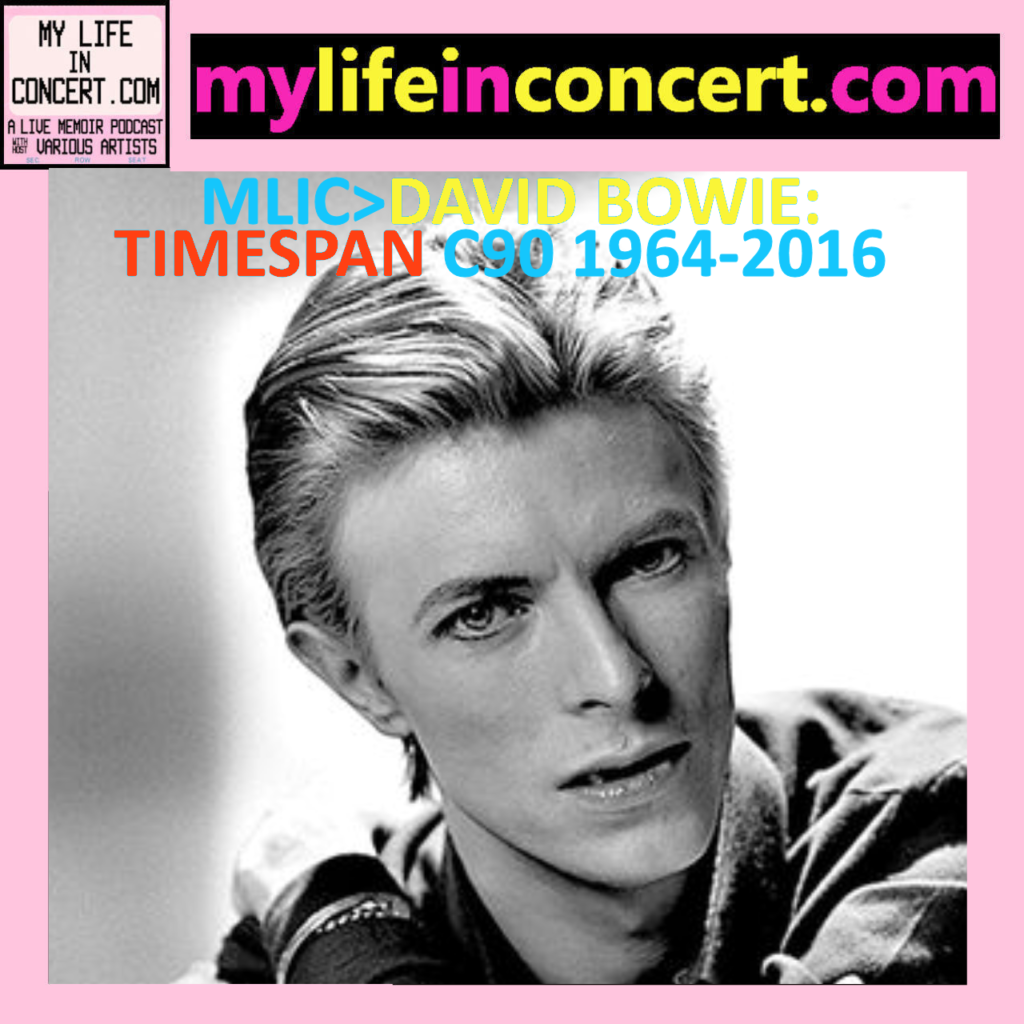
MLIC>DAVID BOWIE: TIMESPAN C90 1964-2016 is my cassette-length overview of Bowie’s whole career, cherry-picking the Best of Each LP or Era from 1964 to 2016—It’s another in this series of these career-spanning Timespan playlists I have been putting up, with Timespan C90 playlists also for Marianne Faithfull and John Cale.
That’s of course when the industry even bothered to pander, as a demographic aged and demanded a more subdued permutation of the past as a sonic balm to keep the wolves at bay in a society in turmoil. While I love, for example, Carole King’s Tapestry, those early CSN/Y albums, and mid-70s Fleetwood Mac, seeing them as sterling examples of post-rock pop and meticulous tunesmithing in a good sense, when that stuff is being held up as the epitome of what “rock and roll” is all about, good heavens, it’s over.
Neither lean nor mean were anywhere on offer within either of the radio options, each in its own way working diligently to de-fang rock music. And part of the de-fanging included the expunging of those pesky outsiders, weirdos and eccentrics of many stripes who didn’t want to play nice with the tame ducks.
And I am one of those outsiders the R&R Corporation Inc. sought to deep-six in the MOR-ization of rock culture. I was the quarry.
Wham Bam, Thank You Glam! It’s 1973: Some of my glittering favourites that I was listening to during’73-early ’74: Aladdin Sane, David Bowie; New York Dolls; For Your Pleasure, Roxy Music; Mott Mott the Hoople; Transformer, Lou Reed; Suzi Quatro (click on each title to hear a track from the album). Each one of these still gets regular airings ’round my place.
Throughout my life, I’ve never seen myself as neatly fitting into a host of popularly available moulds — aesthetic, sexual, philosophical, or lifestyle. If you’ve spent your life colouring within — and toeing — the lines, then I’ll likely be instinctively wary of you. It’s not about smugness; it’s about the empathy and understanding that can sometimes only come with being shut out of the big picture. I guess I find it hard to trust someone who doesn’t have some kind of outsider experiences and perspectives to drawn on and learn from. I have an well-earned distrust of unfettered, unquestioned enfranchisement even as I sometimes navigate worlds that are just that and inherently alien to me. My natural propensity is to bond with others coming from marginal capacities, experiences or perspectives. As they say, birds of a feather flock together.
It also adds a little bit of intrigue into the picture. As Neil Young wrote in reference to “Heart of Gold” in the liner notes to his Decade compilation, regarding the well-intended, but ultimately circumspect and uncomfortable warm mainstream embrace he got with his post-Harvest commercial watershed, “This song put me in the middle of the road. Travelling there soon became a bore so I headed for the ditch. A rougher ride but I saw more interesting people there.” (Young himself paid homage to glam and Bowie via original copies of Tonight’s the Night having small amounts of glitter inserted inside the sleeve, a “Hello” from one iconoclast to another.)
Even today, as a middle-aged man with a professional career who can rock a crisp Calvin Klein suit and high-end footwear (that’s my other side: the one that loves sleek elegance and aesthetically sharp design), I’m always aware of my “otherness.” I feel quite comfortable in my own skin thank you very much, but remain aware of where and when I’m simply a tourist in another’s land. At my core, I will always be one of the outsiders, one of the freaks. And I say that with nothing but pride and honour.
“Who’ll love Aladdin Sane?” Four who would: Exploitation writer Richard Allen; Kate Moss; Lady Gaga; and The Undeads, from the delightfully silly Phantom of the Paradise (1974).
While I perhaps didn’t understand all this about myself intellectually at that time, I did so intuitively, and glam rock was a significant cornerstone that allowed me to let out my inner-freak more overtly and confidently. That’s why all the mainstream rock culture missives launched at glam — “It’s fag music!” and “It’s all artifice!” — made me love it all the more, as it truly advanced Hendrix’s rally cry from the previous generation of flying one’s freak flag high. Well, Jimi got to do so anyway, as did a select group of others, although it became apparent that “freakishness” within the pervasive rock culture came with limitations and “buckle under”s. Certain “freaks” were able to wave their flags high, while others were relegated to flying at half-mast, if at all.
One of glam’s big taboo-breakers and liberating factions was that it was the first rock movement to defy normative assumptions of gender and sexuality that, ironically, went beyond mere clothes and hairstyles, in a way that was disquieting to much of the rock audience. If The Barbarians’ “Are You A Boy or Are You A Girl?” inherently quelled the anxiety around that question via hetero-normative assurances that its audience would implicitly understand, the likes of the gay/bisexual “John, I’m Only Dancing” and “Walk On the Wild Side” levelled the sexual identity playing field, eschewing socially comfy heterosexist assurances even it was more optics than reality.
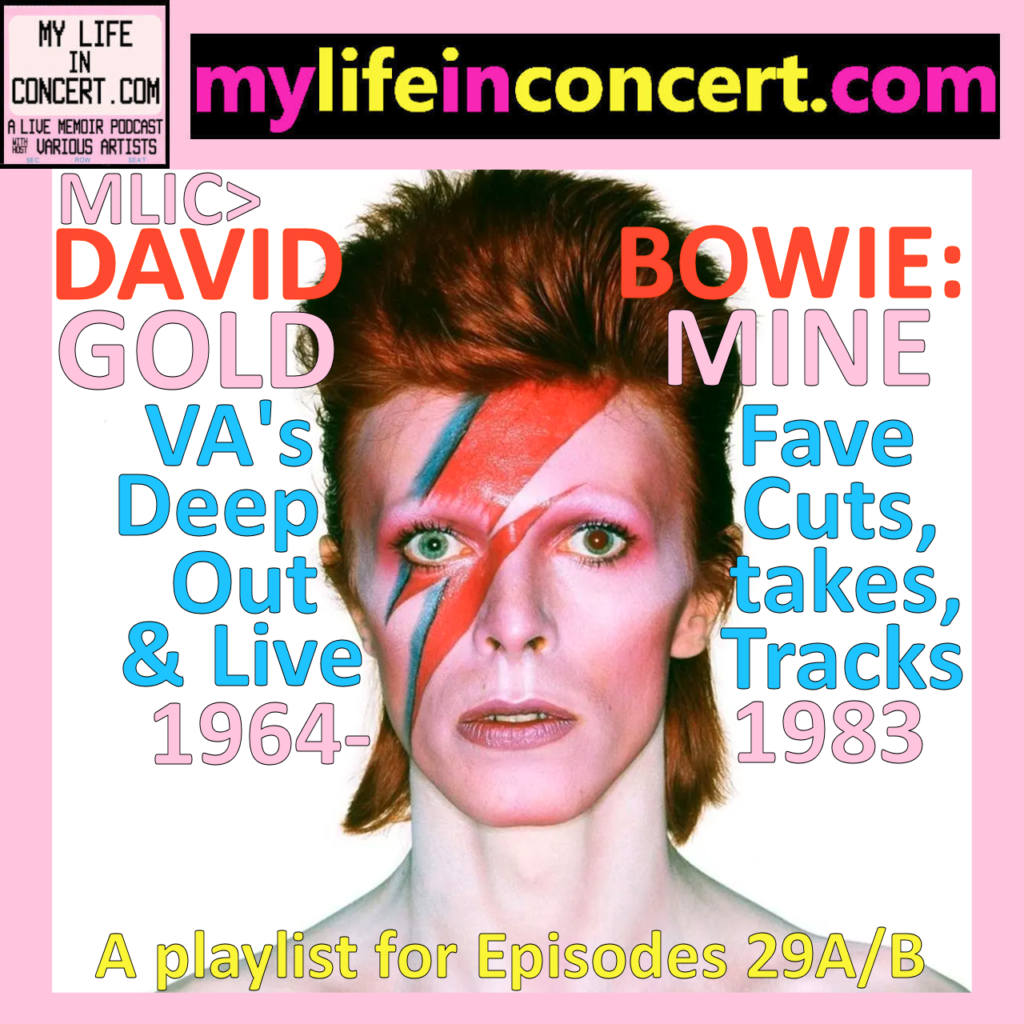
MLIC>DAVID BOWIE: GOLDMINE—VA’s Fave Deep Cuts, Outtakes, & Live Tracks 1964-83 is 5 hours plus of Bowie rarities, obscurities, and lesser-heard cuts from his first 20 years as a recording artist. Great for a long drive, walk or run, or while working on a long project, or simply to throw on shuffle.
The long-overdue opening up of this particular can of worms impacted not just the performers but its audience and the presumptions that went with it. Remembering the aftermath of Bowie’s 1972 Top of the Pops appearance, Soft Cell’s Marc Almond remembers sides being immediately taken the day after the “Starman” performance aired: ‘Bowie was a queer, and if you liked him then you must be a queer too.’”
No small wonder, then, that a whole new rainbow coalition of the previously disempowered reciprocally embraced Bowie and glam as the first rock movement to say a genuine “WELCOME!” to swaths of the audience who may have liked the music but had never truly felt invited to the party.
Ziggy Falls to Earth: Ziggy’s sound and style gets one of its first airings during a performance of Hunky Dory‘s proto-Ziggy, Velvet Underground-inspired “Queen Bitch,” on The Old Grey Whistle Test, early 1972. The Ziggy Stardust album was in the can by this point but would not be released for another four months.
As for the “it’s all a put on!”-style grousing: good grief! It was the era of “earthy authenticity” as the standard bearer for “respect” and “legitimacy,” a benchmark I’ve always been weary of as a badge of honour; sincerity can be a damn easy thing to fake. Ask any actor. Whether one wants to believe so or not, we are still talking about a performance: artifice, illusion and image have always been part of the rock package. Even “anti-image” is often an image.
Let’s face it — the stories are all true, right? The Beatles were always perfect sweethearts and gentlemen who treated everyone around them with the best manners; CCR grew up in the Louisiana backwoods; Joe Strummer of The Clash triumphed over a deeply disadvantaged life; the surly, street-wise Rolling Stones all came from the school of hard knocks, on the banks of the Mississippi Delta …. or was it the south side of Chicago? …. oh, wait a minute, maybe not.
This isn’t a swipe at any of these great artists who I love, it’s just to point out that rock music is as much about presentation and presumptions as any other type of performance. Rock culture has always been quite aware of the John Ford maxim: “When the legend becomes fact, print the legend.” I’m in no way saying that many artists aren’t truly emotionally invested in what they are doing but rather that it’s naive to think that, once an artist steps out into a public, money-spinning venture and forum, replete with managers, PR reps, records companies, etc, image positioning within the marketplace and career strategizing isn’t a big part of the picture.
Glam threw gleaming glitter on the fact that being a public musician and artist involves being packaged and delivered through a mass medium. Indeed, whole swaths of each of our own days as we go about our business are about image and roleplaying in the theatre of our daily lives, and the various guises and characters we selectively play and present to each particular “audience.” All this gets amplified once a spotlight of any kind gets turned on. Glam was simply the latest in a still-ongoing series of visual re-inventions that go hand-in-hand with the performing arts of all stripes. As Roxy Music’s Phil Manzanera explained to Simon Reynolds for The Observer last September, regarding the new look they forged to accompany a new sound and attitude, “A lot of musicians were getting strung out on heavy drugs (in the early 70s, and) they were out of it, so they weren’t even bothering to wear kaftans or other hippie stuff, which had been stylish in their own way.”
All that I really understood at the time was that I found the music, messages, and controversial presentation captivating, responding on a gut level. It was all such fun!
A recently discovered copy of Bowie’s January 3, 1973, Top of the Pops performance of his then-new hit, “The Jean Genie.” This performance was thought lost for good until a retired BBC cameraman revealed that he’d kept a copy for himself. It was re-aired for the first time in 40 years on the BBC last Christmas. Right about the time this was being recorded and aired, I was just discovering Bowie for myself on the other side of the Atlantic.
As a newly minted teen, I had a lot of catching up to do when it came to learning about these glittering creatures who were now my fave raves. But while Bowie may have been a new star in the music marketplace, this stardom was years in the making. Something I once read regarding his longtime friend, rival, and glam predecessor, Marc Bolan of T. Rex, applies to Bowie: he’d had enough false starts to make a realist out of Mary Poppins. His first 45, “Liza Jane,” released under his birth name of Davie Jones with his backing band the King Bees, is a fiery if indistinct brand of raw R&B that was all the rage in London at the time via The Rolling Stones, Yardbirds, Pretty Things etc. It was also his first of many flops. (He didn’t become “Bowie”until 1966, so as not to be confused with that year’s overnight superstar, Davy Jones of The Monkees.)
David Debuts: “Liza Jane” by Davie Jones and The King Bees (1964).
By 1971, armed with a new RCA Records contract and cigar-chomping manager Tony De Fries, he inched one step closer to his goal via Hunky Dory: his first masterpiece and one of my very favourite David Bowie albums. While only a modest hit at the time in the UK (it was later a major commercial success there, post-Ziggy), its fey, skewed melodic pop laid out many of his topical obsessions for the years to come (new youth cultures; Nietzschean philosophy and power; stardom; pansexuality; occultism; madness, etc), contained explicit tributes to several inspirations (Warhol, Dylan, the Velvet Underground, his institutionalized half-brother Terry, and overall theatricality), and contained a dry run for the sound and stance that would arrive fully-blown on the following year’s The Rise and Fall of Ziggy Stardust and the Spiders From Mars with the VU-inspired, gay-themed rocker, “Queen Bitch.”
Art Decade: Bowie’s written two of my favourite songs about artists, namely “Andy Warhol” from Hunky Dory (1971, above) and “Joe The Lion,” about a Chris Burden-esque character, from “Heroes” (1977, below).
Unlike the “Space Oddity” experience in 1969, this time when the fame he craved touched down on his doorstep via Ziggy and “Starman,” Bowie was ready and prepared to confidently dig in, solidify, and move forward. Part of his game plan was to be cultural curator as well as a unique performer in his own right, as he adamantly brought his corner of the universe to the fore with him. He had written that other new song I was into, “All the Young Dudes,” for one of his favourite, recently disbanded London groups, Mott the Hoople (also produced by Ronson and Bowie, like Lou Reed’s Transformer), the band re-assembling for the project, belatedly reaping the success they had missed out on first time around.
Bowie also oversaw post-production on one of the seminal rock albums of the era from one of his idols and influences, Iggy and the Stooges’ gleefully nasty, euphoric, proto-punk masterpiece, Raw Power. Meanwhile, Lulu hit #3 in Britain with her version of “The Man Who Sold the World” complete with Bowie on backing vocals, while he played piano on Peter Noone’s UK Top 20 cover of “Oh! You Pretty Things.”
As for glam rock in general, the revelations and strangeness kept coming, particularly with the New York Dolls — who I could scarcely believe existed — and Roxy Music, who took the honour of being the first band I ever saw live. Meanwhile, lots of pre-glitter acts from the time tapped into aspects of glam’s sound or style (see: Elton John, The Rolling Stones, Alice Cooper, etc.).
For my 5th episode in my initial run of kick-off EPs looking at one concert from each decade starting with the ‘70s, my choice was Concert no. 104. (EP5) Never Get Old: David Bowie with The Polyphonic Spree, Corel Centre, Ottawa, Ontario, Canada, April 2, 2004. Here is the promo commercial I made for the podcast with all of Bowie’s solo album covers from David Bowie (1967) through A Reality (2003) in a morphing series!
The wider, mainstream rock audience, however, weren’t exactly accepting, particularly in the less-urban areas of North America. The push-back created, for the first time, a widely visible, popular intra-rock underground. Some of it was simply down to a good ol’ generation gap — something that Bowie had lyrically anticipated on Hunky Dory’s “Changes” (“Look out you rock and rollers / Pretty soon now you’re gonna get older”) and “Oh! You Pretty Things” (“Don’t you know you know you’re driving your Mamas and Papas insane”).
While glam was a certified public (out)rage in the UK and chunks of Europe, it was more of a cult-ier thing here in Canada, and even more so to our south. This gave glitter rock an accentuated us/them, in/out patina which made it all the more alluring to the marginalized audience revelling in its playful decadence.
Bowie in the 1970s was essentially the biggest cult act on earth; he was never truly part of the US corporate FM rock machine. Just as certain “coded” language or sartorial choices — from London Palare to Los Angeles zoot suiters and beyond — have helped members of minority tribes identify each other throughout time, glam’s outlandish, sometimes confrontational clothes let you know who was and wasn’t down with what you were about. I distinctly remember being impressed with my elementary school’s new art teacher who arrived in 1974. On the first day of class, he correctly identified me as having “a David Bowie haircut” (an Aladdin Sane-ish knock off, minus the red dye) even if he did pronounce Bowie “Booo-weee.” (He was also into cutting edge art, kept a bottle of bourbon in one of his desk drawers, drove a motorcycle to school, and looked like a ‘70s porn star right down to the ‘stache: my kind of art teacher.)
As for Bowie himself, around the time I was discovering “Space Oddity” and then shortly thereafter the Ziggy album, he was putting the finishing touches on his much-anticipated follow-up, the harder-rocking, Ziggy-in-America Aladdin Sane, sporting the iconic lightning bolt album cover shot and the androgynous semi-nude image inside the gatefold. But, just as a global audience was tuning in, Bowie famously killed his alter-ego with a shocking on-stage announcement during the tour’s closing date at London’s Hammersmith Odeon.
Above: David Bowie on Soul Train, late 1975, another broadcast I remember watching. The Q&A is sadly hilarious as he was essentially existing on a diet of milk, Herculean amounts of cocaine, and little else. Below: Here is his infamous, totally whacked out interview with Russell Harty for UK TV around the same time. Oh dear … oh my.
Its parent album, Station To Station, was another jaw dropping leap forward. Written and recorded shortly after Bowie had finished his acting work for his acclaimed feature film debut in Nicholas Roeg’s The Man Who Fell to Earth, and amid deep cocaine-fuelled, sleep depravation paranoia, Station To Station borrowed the funk template of Young Americans but darkened the mood and sense of dread substantially. A rock edge was tossed back into the mix, interweaving the extended, groove-based excursions with angular, left-field guitar workouts, and adding all manner of aural and lyrical cues that pointed towards where his music and aesthetic were journeying to.
Whereas Ziggy had anticipated aspects of punk rock which was exploding at the time of Low’s release, Low itself anticipated early-‘80s post-punk on one hand and some of the darker synthpop to come on the other. Its decidedly uncommercial and experimental nature alienated many, with the title rumoured to be a reference to the reaction by RCA executives upon hearing it (or that its title, coupled with the Bowie still from The Man Who Fell To Earth, created the pun “Low Profile”).
VA presents … 14 Interesting David Bowie Vinyl Releases for His 75th Birthday To mark what would have been David Bowie’s 75th birthday on January 8, 2022, I select and discuss 14 interesting pieces of Bowie vinyl from my collection.
(Above) Low’s single, “Sound and Vision,” a meditation on the mystery that is creative inspiration — and the fear of losing it — was an unexpected UK hit. It has since becomes one of his signature songs. I’ve always loved that the vocals don’t start until halfway through it. That’s Mary Hopkin on the “do do do”s, by the way. Meanwhile, Side Two showcased sombre mood pieces such as my favourite track on the album, “Art Decade” (Below).
Other aspects of Low turned out to be more obvious than they had seemed. I’d long thought of “Breaking Glass” as a lyrically abstract depiction of a fragmenting psyche. However, according to a 2012 MOJO article by Paul Trynka, author of acclaimed Bowie biography Starman, the song is a near literal account of a big row that went down in the studio during an unwelcomed visit from his estranged wife Angie.
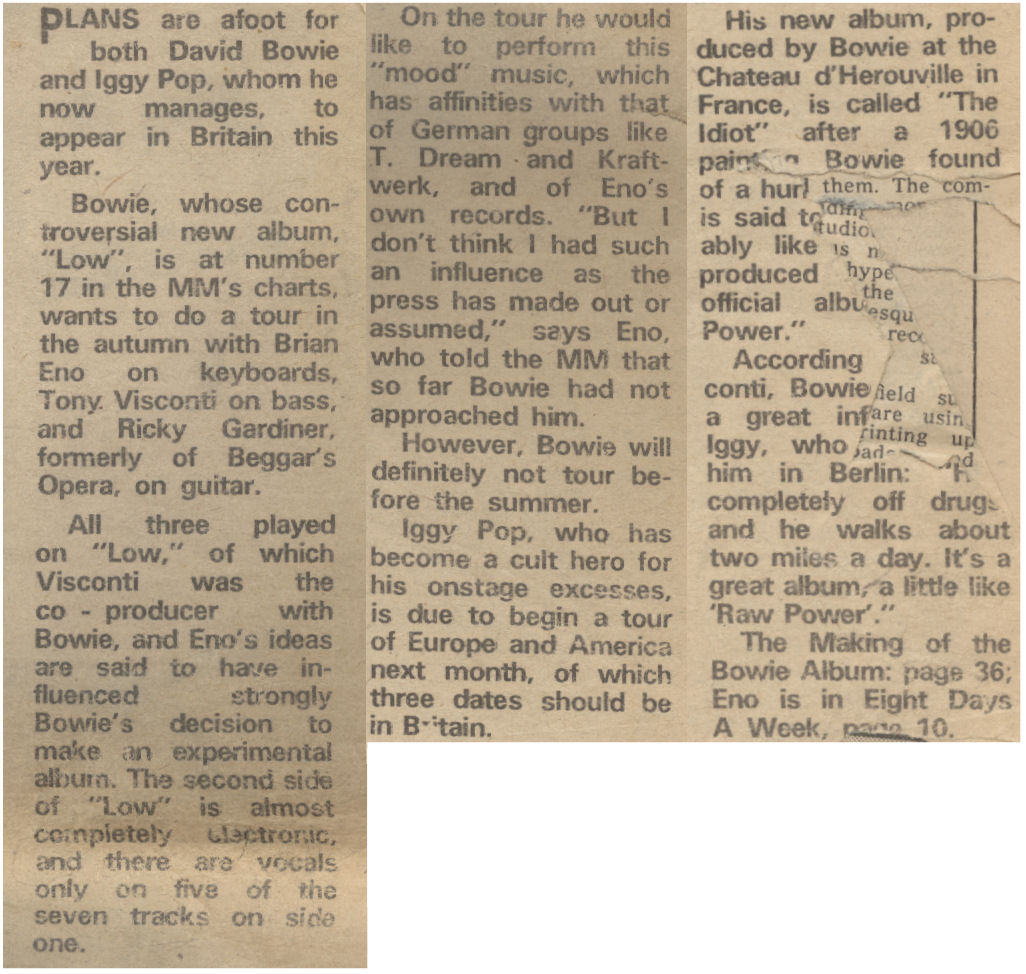
My copy of the January 29, 1977 issue of Melody Maker announcing the forthcoming Iggy Pop album The Idiot, a collaboration with Bowie. The two famously moved to Berlin in 1976-77 during an artistically fertile period for them both. A movie is underway about their time living there. Bowie also played keyboards in Iggy Pop’s band for the tour, resulting in a bizarre appearance on the Dinah Shore Show. Someone has kindly posted the near-complete interview on YouTube (below). (Magazine photos and scans on this page by VA).
Shortly after the Iggy Pop tour wrapped, Bowie went to work on the only record of the “Berlin Trilogy” actually recorded there: his second (!) release of 1977, “Heroes”. With Eno playing a key role once again, and with Robert Fripp this time contributing guitar, it largely followed the skewed rock/mood pieces side split of Low, only even darker than its predecessor (Bowie also helped Pop knock out his last truly great album, Lust for Life, simultaneously with the “Heroes” sessions.)
“Heroes” announced in the September 10, 1977 edition of Melody Maker.
My favourite Bowie track? The epic, paranoid “Station To Station.” The European canon is here.
Bowie returned to touring the following year, a jaunt documented via Stage, a live disc I’ve always been fond of, before completing the “trilogy” with Lodger in 1979. This time around, the side splits were more about East (Side 1) vs West (Side 2), and picked up from the avant-rock cues from “Heroes” first side, along with many nods to world music, especially in “African Night Flight” and the Turkish-influenced “Yassassin.”
He greeted the 1980s with another one of his finest albums, Scary Monsters (And Super Creeps), a brilliantly executed, accessible synthesis of pretty much everything he’d done since 1969. It yielded major international hits in “Ashes To Ashes” and “Fashion,” both accompanied by innovative videoes, the former cannily incorporating figures and visual elements from the emerging Blitz/Synthpop scene emerging in London at that time, one in which he’d been a huge influence.
And then …. silence.
An ad for Scary Monsters (and Super Creeps) from the September 27, 1980 issue of NME (the top corners read “Often Copied/Never Equalled”), and the stunning video for its lead single, “Ashes To Ashes” video (below).
© 2013 VariousArtists
Comments From Each of The Original Two-Part opensalon.com Posting
Comments for the original Part One:
VA, with my own OS focus on several of the ’70s years, currently centered on 1977, I was very interested to read your thoughts about David Bowie, social movements, music trends, becoming a teen, etc.! At the same time you were talking about ’72 transitioning into ’73, I can clearly remember what I was doing as a freshman and college and the music that could be heard in the dorm that school year.
In a similar way, my older brother had great musical taste and I could always count on him having the latest and greatest albums starting from the mid ’60s and on. I tended to like listening to a couple of the FM stations in the city and, in fact, when I was in high school and a staff member of the school newspaper I penned an article entitled “Know Your FM Dial.” I listed all of the metro FM radio stations and the genre of each. After the article appeared classmates would come up to me and ask questions along the line of “what was the frequency of that rock station in New York?” (An early version of the guys who came up to Dan Rather and said “Kenneth, what is the frequency?” but without any violence or malice.)
I definitely added to my own music interests at college being in the company of friends who had varying musical interests and I think your wonderful post speaks to so many trends that happened in the ’70s that made it an interesting time to live through. So often we think of the ’60s as an amazing decade, but the ’70s had a lot happening in so many ways, as the two of us know very well. Thanks very much for sharing your music and thoughts here!
I wish we could have been kids together–even though I’m a bit older than you. We would have had fun. I too had the benefit of being in a very musically driven household and my older sisters definitely helped form my musical tastes. Such a great era described here. I still feel more attached to it than any other. Monday morning seems a little brighter having read your post, VA.
“I don’t know where I’m going from here, but I promise it won’t be boring.”
David Bowie
Let the lightening strike, I say.
The first time I heard Bowie singing about Major Tom my heart broke for him, his wife and for maybe for myself, too, since I was just finding out what that really felt like.
Something that brings me great joy is watching my 13 year old son and his buddies respond to music. They have great taste, I’m glad to report, and have so much more to discover. Thanks for another great review of the musical, the personal, the social ~
Well, I somehow doubt you were listening to CFPL.
By 1974, I was living in Windsor, across the border from Detroit, with a huge choice of music right across the spectrum, particularly on FM stations with their AOR playlists. The Big 8 — CKLW — was also still going strong, but about to start its long sad death spiral into talk radio.
That said, the entire era was one of transition, musically and otherwise. I was still largely a folkie and paying more attention to words than music. (I suppose I still do.) Still, I couldn’t help but be influenced by the likes of Bowie, and I loved Walk on the Wild Side. Edginess is and always will be a good thing in music and in life.
Looking forward to your next installment.
HUGGGGGGGGGG
Great write-up Various. While I became a fan of Bowie in the early 70s, his music didn’t seem that genre-bending to me. Unlike you, I was also a fan of the prog groups of the day like Floyd, Genesis & Yes and on the heels of the Beatles later recordings, the boundaries of popular, or youth-oriented music just seemed to be expanding in all sorts of directions, Bowie being but one of them.
Glad you mentioned Walk on the Wild Side. Tom Robinson gave it credit for emboldening him to release Glad to be Gay in 76.
Ziggy Stardust was a great album. Aside from the tracks you mentioned, Suffragette City was a staple at university parties for a couple of years. And Five Years is a song I’ve never tired of.
I mostly agree with your characterization of the music scene in the 70s though I found Fleetwood Mac too MOR for my liking, aside from a couple of songs. Mainstream rck may have been getting more commercialized but that just seemed a natural progression to the demand of audiences. There were just so many people who wanted to see Zeppelin, the Who and the Stones that stadium rock was inevitable. And those bands were still putting out pretty decent stuff. Then in 76 rock got the punk and soon after the New Wave infusion, though it took a few years before they caught on in a big way.
Great version of The Jean Genie. I’d never seen this one before.
Algis: It was a time when people were finally starting to loosen up. Glad to jog your memories.
designanator: Re: your freshman year … it’s incredible how music can weld itself with a place and time. I love the title of your article, and you would have heard FM in its more adventurous days. At the turn of the next decade is when the university station began broadcasting across the city in my hometown, and that DID make a HUGE impact on my listening tastes, exposing to me to all sorts of stuff outside of my own tastes at that time, such as jazz or earlier artists I’d missed. I also went on to be a DJ there myself for almost 9 years.
I’ve had this conversation many times with people in and around my age group about how the changes in the 60s impacted some but really hit more broadly in the culture in the 70s.
BTW, do you know the REM song that they wrote about the Rather incident, appropriately named “What’s the Frequency, Kenneth?” One of my favourite REM tunes as well. Thanks for the great insights and memories.
lschmoopie: I KNOW we would have been pals if we’d grown up together, and we’re not that far off in ages. As for the particular era, I loved it but I can’t say that it or any other is definitive for me, although I do have some particular memories as it’s when I grew up. But, as a student of social history and creative realms, I see it as part of a continuum, and it was an exciting time to grow up in as it was a generally progressive decade on a larger scale in the culture. Glad your morning was made a bit brighter – my day’s always brighter when you stop by, my friend!
catch-22: As I mentioned last time, even your comments are poetic. That’s wonderful about your son, and that he’s open to great tunes. Indeed, the ending of the song kind of threw me too when I first heard it.
Boanerges: Good lord — CFPL!! That’s going back. Of course, that was our CBC TV affiliate, but the radio station was what my folks listened to. The AM stations for the young set were primarily CJBK and CKSL, but we tended to listen to the station coming out of St. Thomas (??!!) — the call letters escape me … CHLO, perhaps? — as they were a little more cutting edge and played some of the glam stuff I was listening to like Roxy, Mott, Bowie, etc. That would have been the station where I first heard “Space Oddity” and “Walk on the Wild Side” — I can still remember that exact early January Saturday morning when I heard the Lou Reed song, sitting in our living room. Meanwhile, you were lucky in having that variety of radio stations in the twin cities/cross border area.
Stim: It was the “1980 Floor Show” filmed at the famed Marquee club specifically for the Midnight Special. I too remember watching it as I was allowed to stay up late for it after pestering my parents to death. I included a clip of it here on OS for my Marianne Faithfull piece, with her and Bowie doing “I Got You Babe.” And without question the Great Marc Bolan and T. Rex needs mention re: glam, and I’m a big fan of his as well. He and Bowie had been friends and rivals since the mid-60s, and it was Bolan who actually started the whole glam thing in the UK. I mention him briefly in the upcoming Part 2 and had initially mentioned him in this piece, but it’s overall so long that I had to cut out some bits to at least try and shorten it. Thanks for stopping by.
Linda: You are the first I’ve known to worship the Bowie groupies, although I gotta say that, having seen Bowie several times, his audiences are the best. Huggggggs.
Abra: With the big stadium bands you mentioned, I liked them too, but in terms of then-new recordings, the Who and Zeppelin seemed to run out of creative steam mid-decade. “The Who By Numbers” was the last Who album I liked and I only liked bits of the last couple of LZ albums. The Stones had a few more good years of producing original music although, as with Bowie’s post-1980 output, there’s bits and pieces I like (and I surprisingly loved “A Bigger Bang” and I Never in all my days thought they’d make a great new album again).
While the stadium thing may have been inevitable, I’m not sure it was a great thing all round for creativity which is why punk needed to happen to keep it alive. It too ended up splintering into dozen of directions that I can trace until today — and one precursor of that was glam. Almost all of the early punk people I remember from the ‘70s had been listening to Bowie, Roxy, Mott, T. Rex, Lou/VU, Iggy/Stooges, so there was that lineage of underground/outsider music as an alternative to the more commercial bands (I sort of touch on some of this in Part Two). Of course, there is also the matter of much of that — and punk — was commercially viable in the UK and parts of Europe in ways it wasn’t here.
Absolutely crackling version of “The Jean Genie” — how amazing is it that the cameraman found the copy in his archives? It’s always great when some rare archival film or photos show up. Thanks for stopping by and your thoughtful input, as always.
Chiller Pop: Great to see you back here, and thanks for the kind words. Glad you enjoyed.
As for Dark Shadows, I personally liked it and also loved the glam rock connection to the character and the time frame. Any time is a great time for T. Rex — hope you were a “cosmic dancer” and “metal guru” on the walk with la pooch.
VA, thanks for presenting Part 2 so quickly on the heels of Part 1!
There’s a lot I didn’t know about Bowie and I’m catching up big time with your posts. Looking back, it was most likely “Young Americans” that caught my attention first of his work. That song is etched in my mind as one of several hits I heard over and over again in the studio sophomore year. A classmate had an FM radio and kept it tuned to a good local station first semester (second semester I had my Sony in the studio with an earphone and quietly moved around from station to station–no stereo radio at that time). When you think of any era and the many genres of music happening at a given time it’s fun to think of what moved you and what didn’t.
As I mentioned a while back my friend, Alyssa, had told me that one of her friends at RISD had been a girlfriend of Iggy Pop’s and I never did get the full story on that. She and I are due to have lunch soon and I’ll have to get the story from her then and pass it along to you afterwards.
Definitely, besides the ’70s, a number of Bowie’s songs from the ’80s form a wonderful remembrance of that time and I’m looking forward to that installment, too. You are fortunate to have seen him in concert, that’s something I missed out on and there’s no going back to rectify the situation.
As with other posts, I see that you have a lot of excellent archival material that you’ve held onto! We should put our show on the road and call it “The Pack-Rat Brothers Band” or something like that!
Having seen so many great musicians pass on for one reason or another the good news is that Bowie is still with us!
A quick check of the news finds this story from The Guardian, just posted an hour ago:
David Bowie’s wife hints at tour plans
Singer’s wife, Iman, told a magazine ‘we won’t be on tour with him’, prompting rumours Bowie plans to return to the stage
http://www.guardian.co.uk/music/2013/mar/14/david-bowie-wife-hints-tour
Sheesh. What a terrific and fascinating retrospective. More than I ever knew or suspected about Bowie, and I’m going to have to start listening to more than the stuff that gets airtime nowadays.
I had an English house master with some of the same traits as your art teacher, including the motorcycle, a BMW that he used to ride down the highway with his black gown flapping out behind him. What a sight. He was directly responsible for my first tentative forays into the mass media (radio and print), but that’s another story.
Some practical questions
1. How do you remember all this?
2. Where on earth do you store all the various artifacts?
3. Has anyone suggested you should be stringing these posts together for a book?
(PS: I hated disco, but mostly because I’m the world’s worst dancer, much to Red’s chagrin.)
You are my kinda (art)historian/DJ.
Well I thought I knew Bowie fairly well but it was news to me that Noone had a hit with Pretty Things. Pretty poppy but that was his style. the collaboration with Iggy yielded some great hits. One of my fave Bowie songs is Bang, Bang – an Iggy tune.
Somewhere in there Bowie was also swindled out of all his earnings. It would have been around mid-70s and he actually had to couch-surf for a few weeks. I saw this in some doc a few years ago about musicians who were robbed by promoters/agents/managers/accountants.
designanator: LOL, The Pack Rat Brothers Band, love it. You’re on.
I too remember the days of mono ear buds, or ear bud I should say. And I agree re: the different genres of different times, although there’s not been a ton that’s been widely popular in North America that I’ve liked much since the mid-70s or so. The UK is a bit of a different story. Also, while FM has played a great role in promoting less overtly commercial music — and college radio was later a big deal for me — there’s also part of me that thinks FM had a negative effect, as in parcelling out the AM/FM division, creating less diversity than there was for AM radio in the 60s. There’s always a trade-off. I think that diversity and different perspectives can be a good thing, and I think some of that was lost with the advent of FM.
So a friend of a friend used to go out with Iggy Pop, eh? There’s a brave lass. I’ll bet she’s got a story or 15 to tell. I’m all ears after your lunch.
I’ve seen Bowie five times, so he’ll be recurring in this series. Actually, the best shows I ever saw him play were on his last tour in 2003-4. And, yes, everyone’s buzzing about Iman’s slip of the tongue. I’m crossing my fingers. The new album’s damn good, too. Thanks again for all your great comments and ongoing support!
Boanerges: I’m now trying to envision the house master on the motorcycle. And this was someone who tweaked an interest in mass media for you! That’s a story I’d like to read.
To answer your questions:
1. I don’t bloody well know. Even within my family I am known as sort of the family memory repository, with various relatives consulting me to confirm what happened when, etc. Also, I do a lot of fact checking online and from my library for these pieces, query friends for situations when they were around to see if their memories match mine and, when applicable, consult journals I’ve kept at various times. That said, ask me to remember someone’s name, address, phone number, directions, or procedural stuff I haven’t done in some time and I am utterly useless.
2. We are about to run out of bookshelf space for my large library, but much of it is (neatly) stored in a series of bookshelves in the den. As for my magazine collection, we have a walk-in closet off then den where I’ve organized everything into accessible tubs residing in a metal shelving cabinet. Plus, we have another storage area, etc.
3. I would love to do so, and part of writing this series would be with that goal in mind, but that could be a pretty tall order and not easy to pull off. Time will tell.
As for hating disco, as with anything else, there’s bits I like and don’t like, and I don’t want to say that everyone who hates something particular hates it for a particular reason. That said, I do feel that certain types of music — or any cultural form — will get disliked for reasons that go beyond that actual tunes.
Thanks for stopping by and for the great thoughts and comments. (Please write about your house master).
catch-22: So glad that I can spin the music that makes your heart sing!
Abra: It was the manager who made Bowie a star, Tony DeFries, and the whole MainMan management stable he had. DeFries was a real mixed blessing in Bowie’s life: on one hand, he indeed swindled him out of a ton of cash, but he also unquestionably played a major role in making Bowie a star, providing not only the capital to bankroll it all, but also in terms of attitude and getting Bowie some plum deals, showcases, and visibility. Without DeFries in the picture, it’s not a given that Bowie would have been the major commercial success he was. Certainly his talent was there regardless, and he would have at least been an influential cult figure, but without that means for the key exposure … who knows?
Still, that doesn’t let DeFries off for leaching off of Bowie. A similar situation happened with the Stones and Allen Klein.
And I love Iggy’s “Bang Bang” too.
VA, interesting to read about your storage setup for the records and memorabilia! A lot of my stuff used in the current series was in boxes in my attic where it remained amazingly preserved. Once the series is over everything goes back up there for who knows how long.
Five times seeing Bowie–I can only imagine how great that was!
I was interested in your point about FM, too. I probably never thought about that because most of my life was spent in the NY metro area and on FM you can find everything under the sun here, from WBAI, the counterculture station that’s still around to several Jazz stations, college stations (such as Fordham Univ.), numerous classic and contemporary rock stations, lite rock, schlock rock, classical music and NPR stations, Hispanic, classic and contemporary R&B/Soul/Funk (WBLS covers all of that), sports, news, Christian, and probably a few others I forgot about. You can see I’m still thinking of that high school newspaper article on the FM stations.
While a lot of the metro AM stations went to talk radio years ago, the same can be said for a few of the FM stations like WNYC-FM that have far more talk than music.
designanator: I guess I was thinking more about variety as cross-pollination. My tastes, as you’ve seen with my blog, are all over the map and in a variety of genres, old and new. Sometimes I want to hear a specific genre or artist, while other times I like a real mix of styles, whereas a lot of radio is aimed at a particular target.
For years I loved making compilation tapes to listen to, then compilation CDs, but now I make iPod playlists which I love because there’s no limit and I can change them up if certain tunes don’t work. If we’re going on a long road trip, I’ll usually make up large playlists of everything under the sun and throw it on shuffle during the ride. It can be fun when highly contrasting songs follow each other.
BTW, your attic did a terrific preservation job!

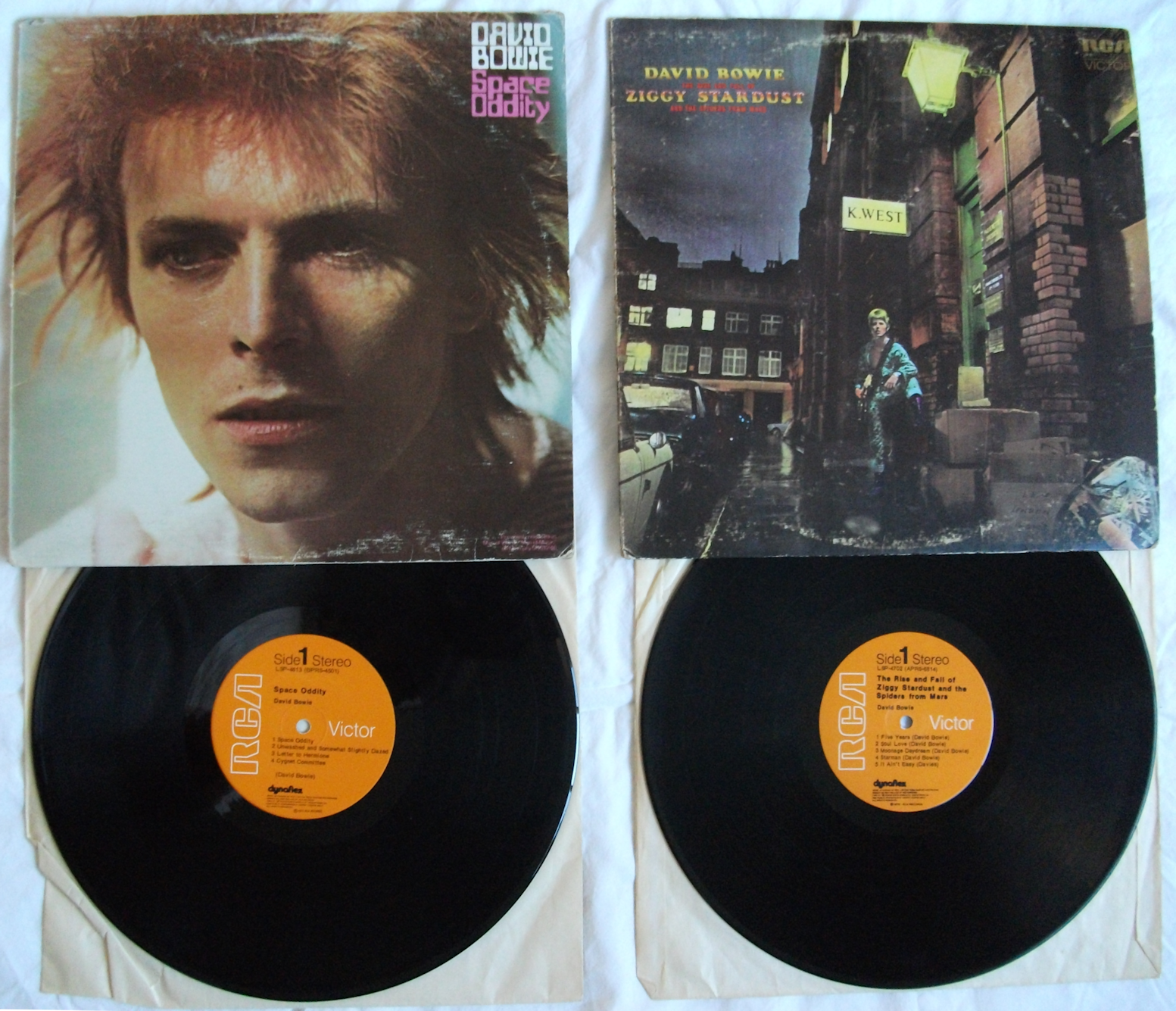
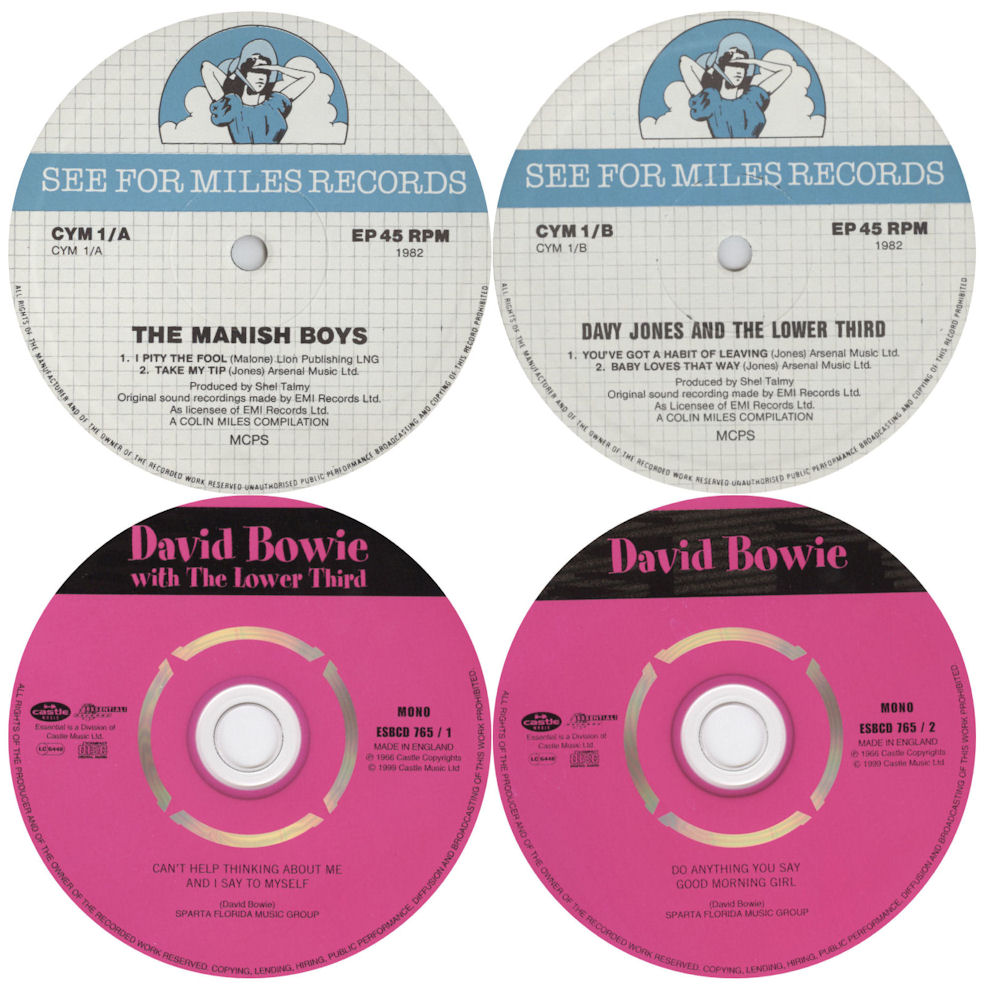
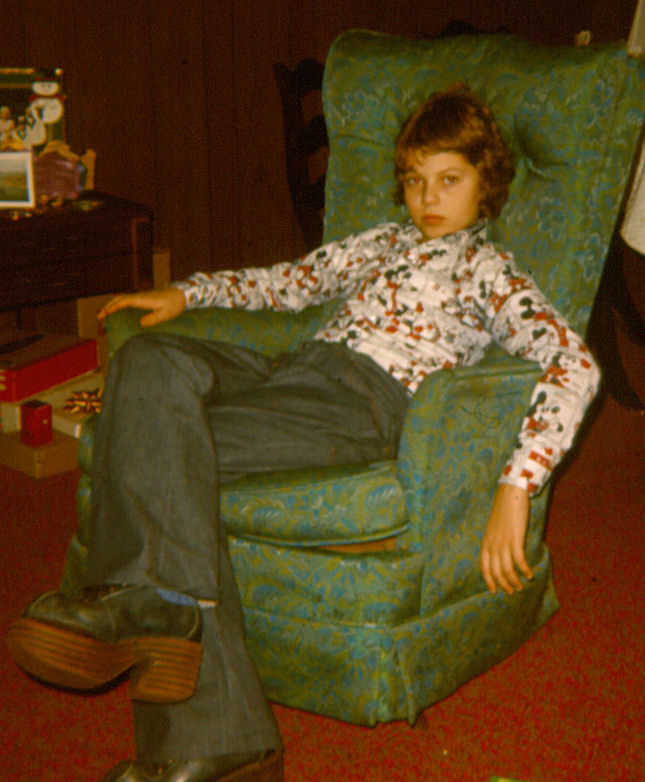
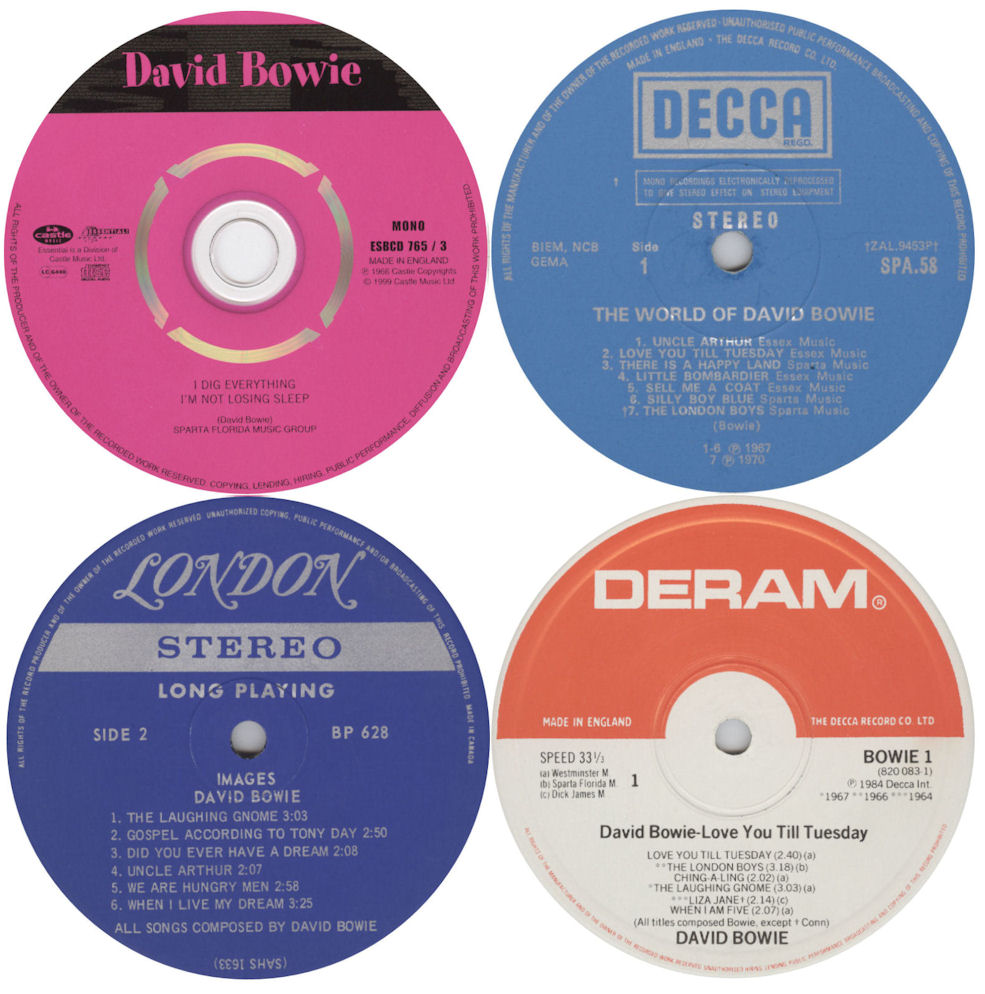


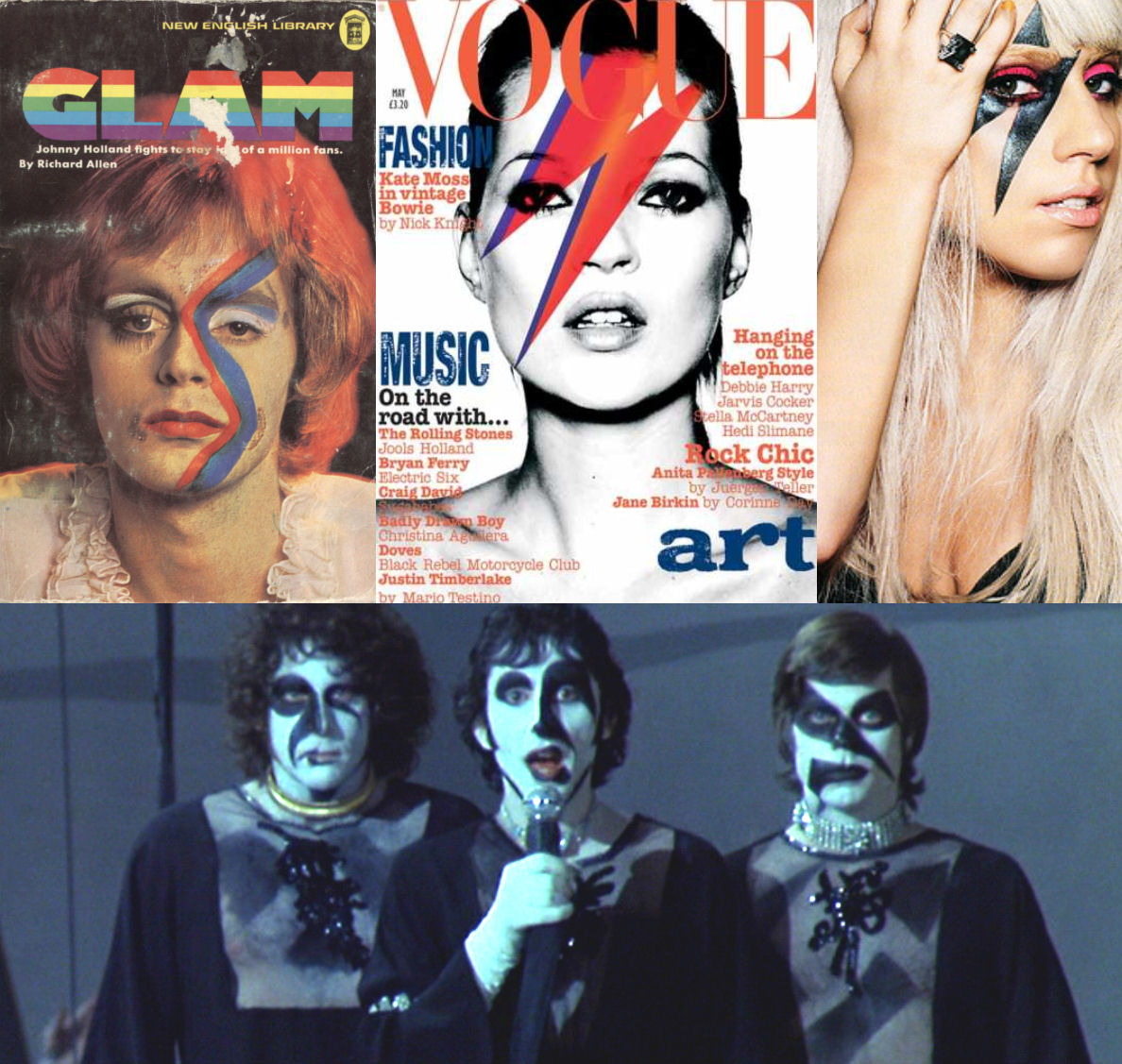

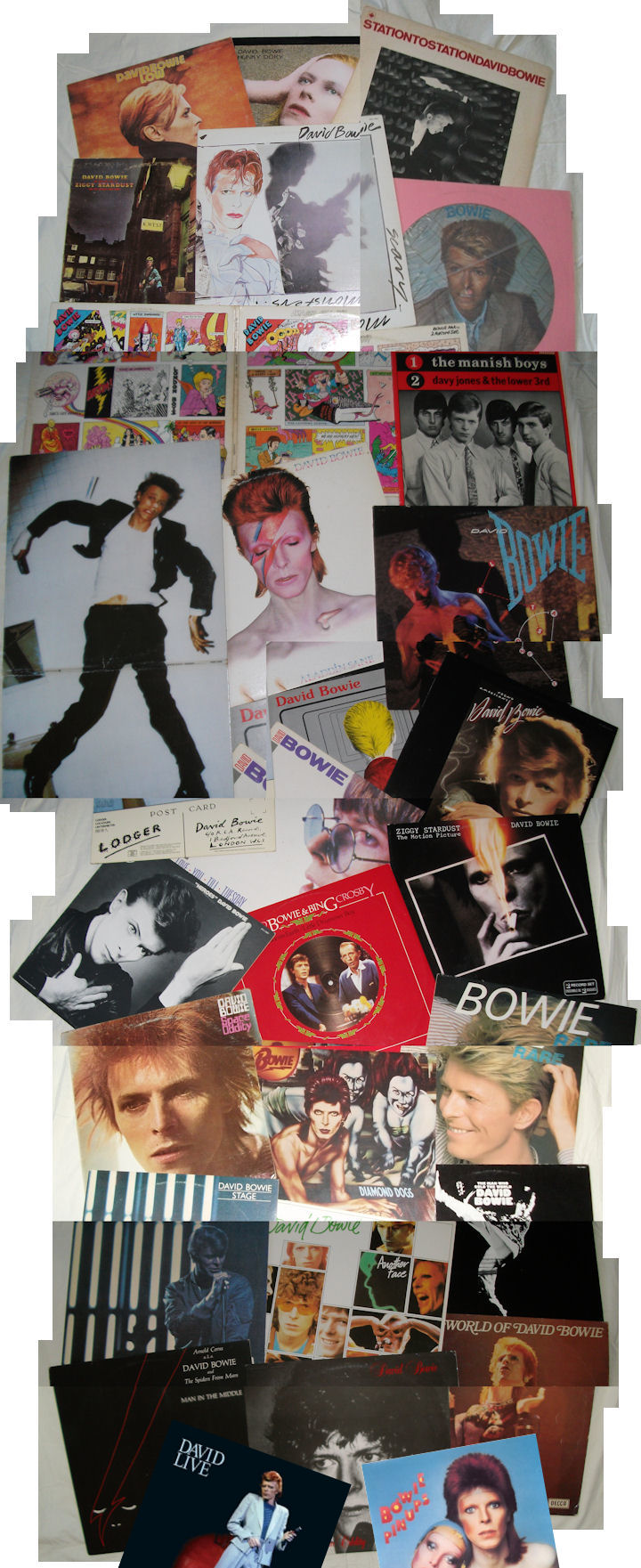

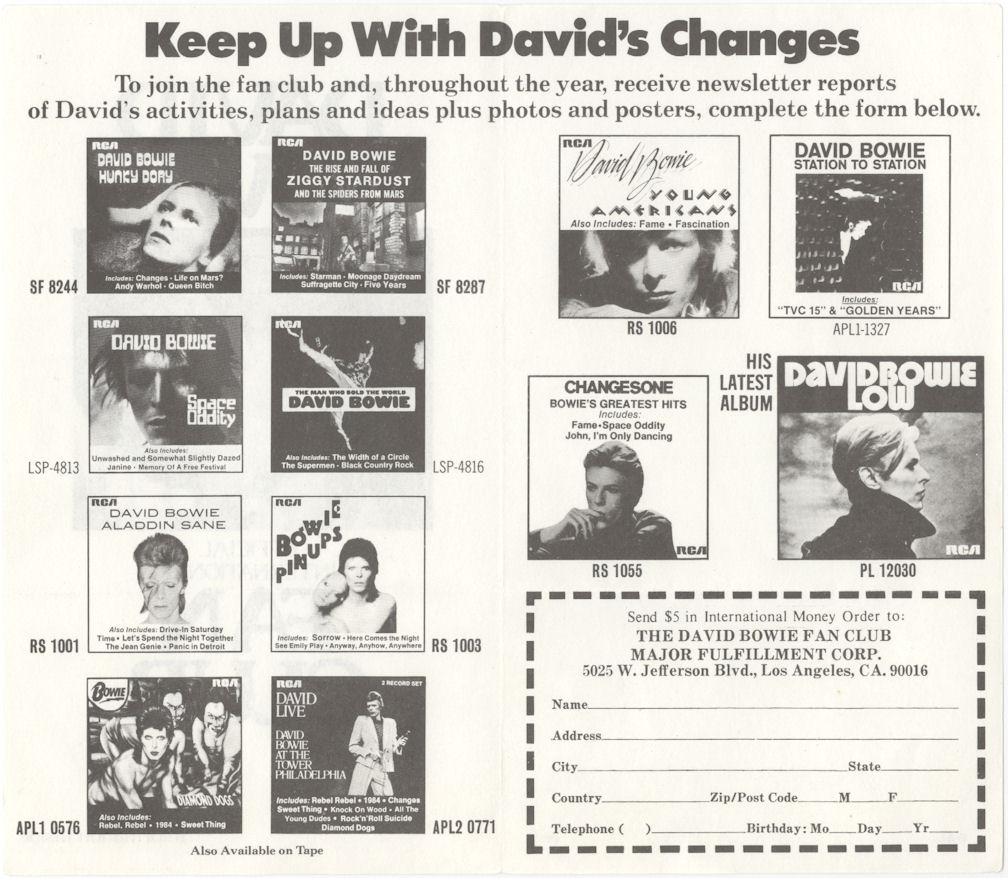
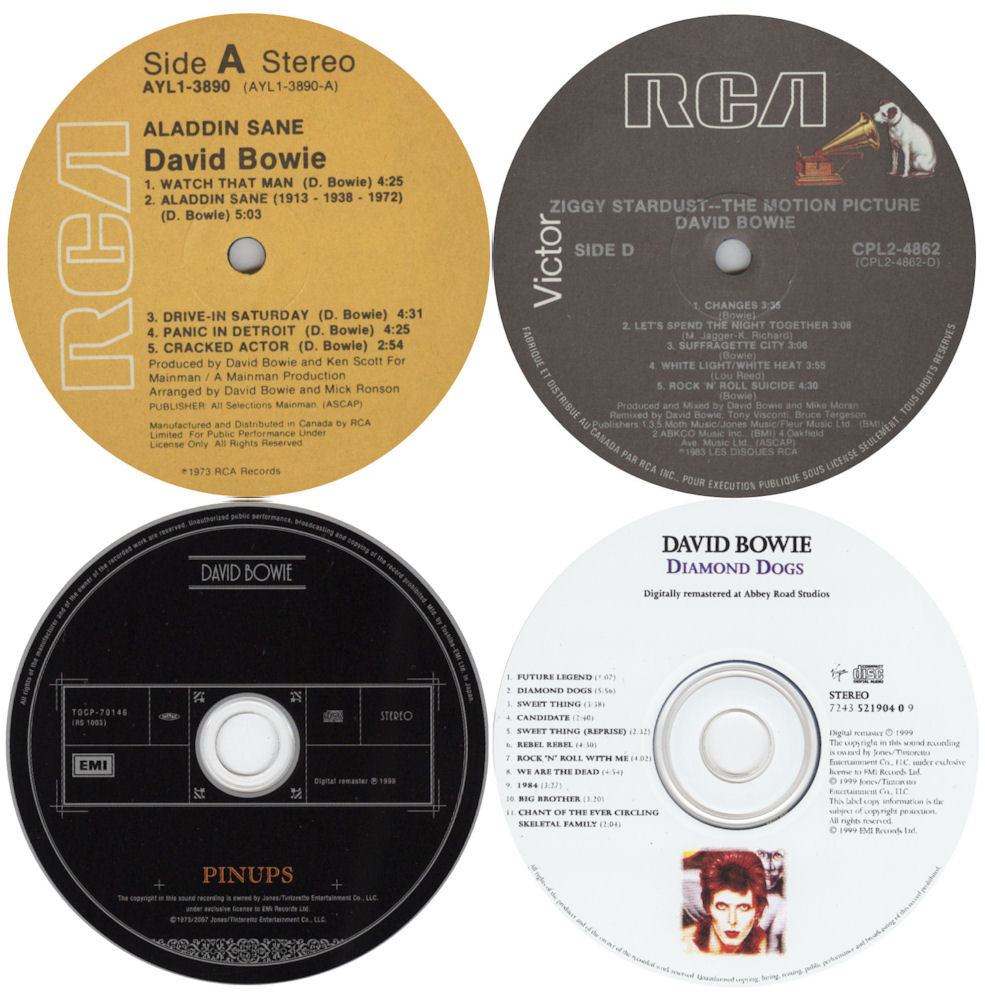
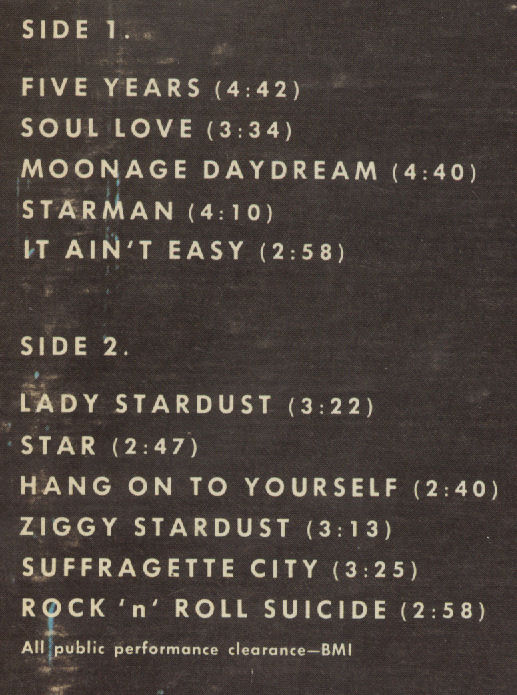
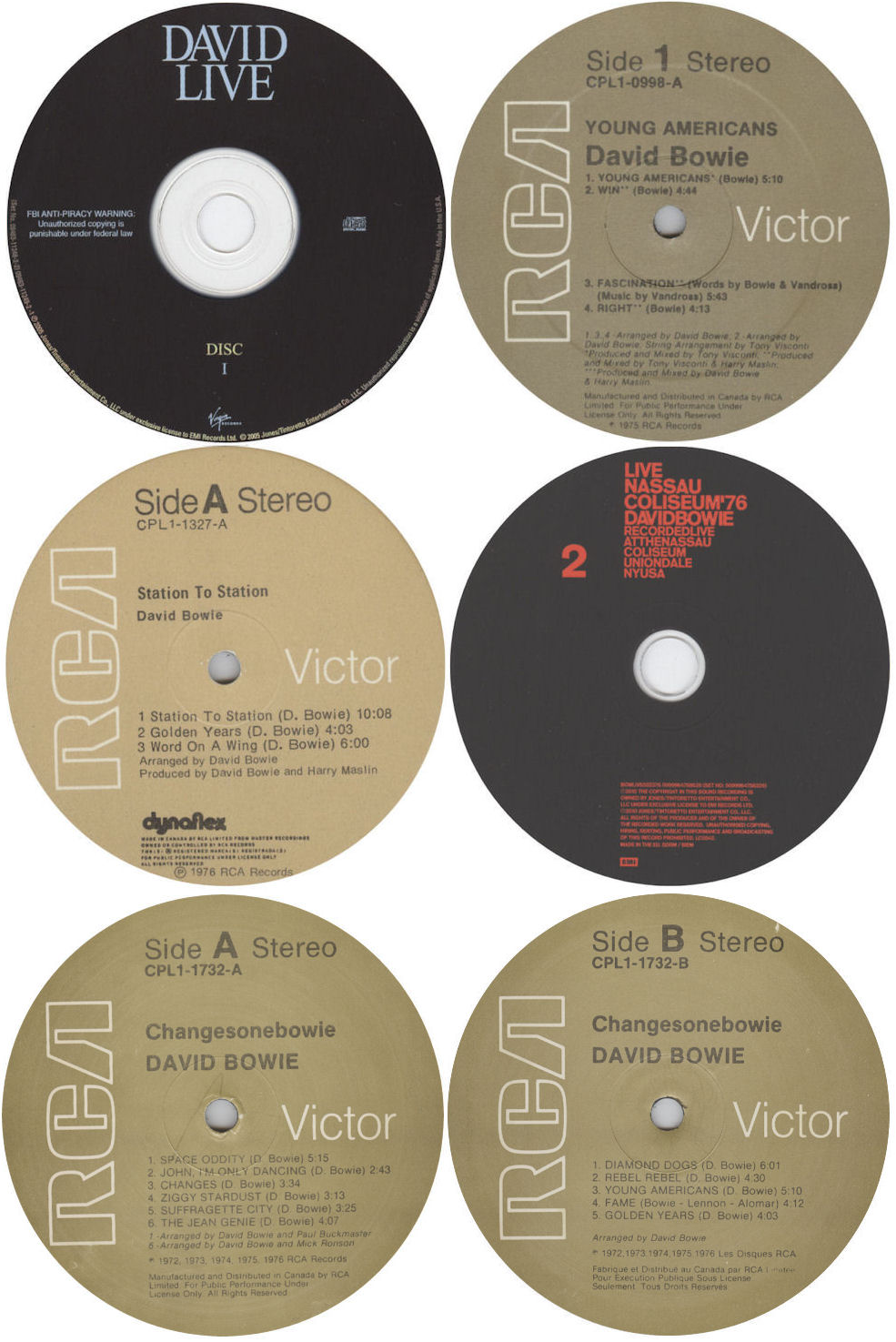
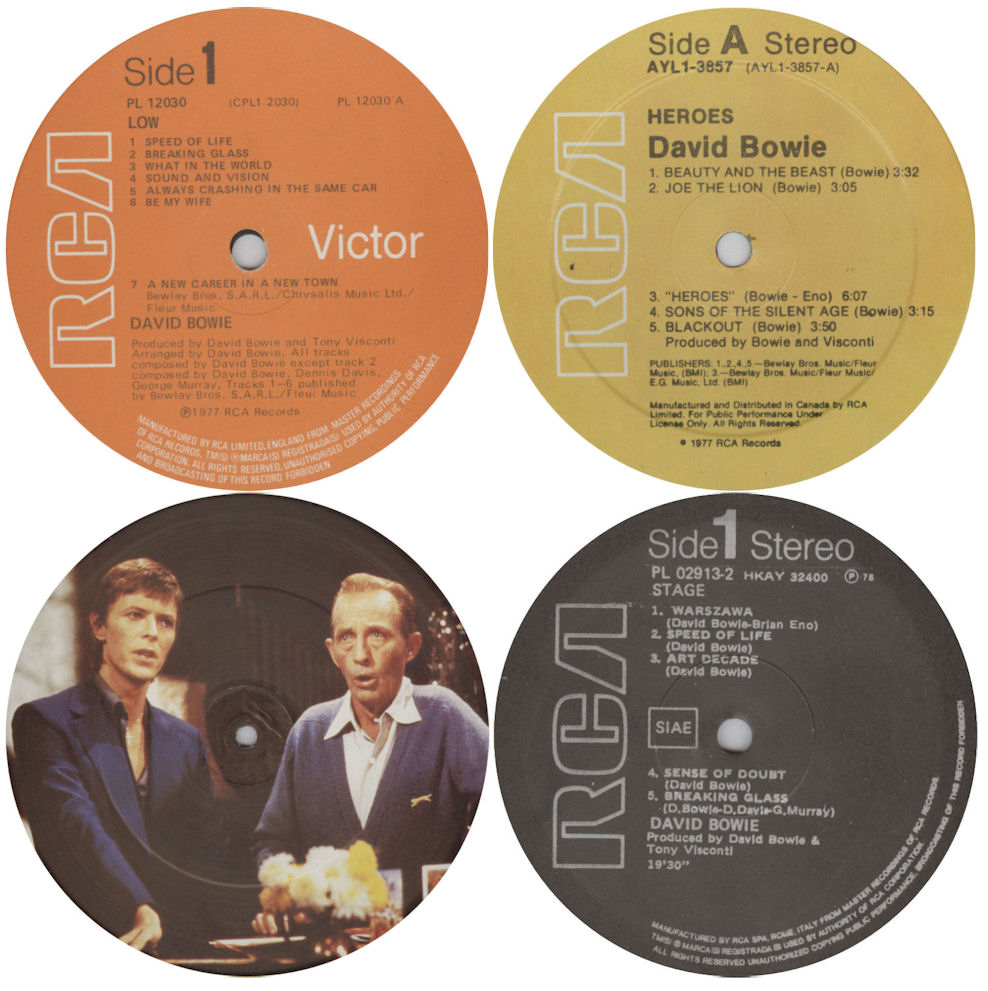
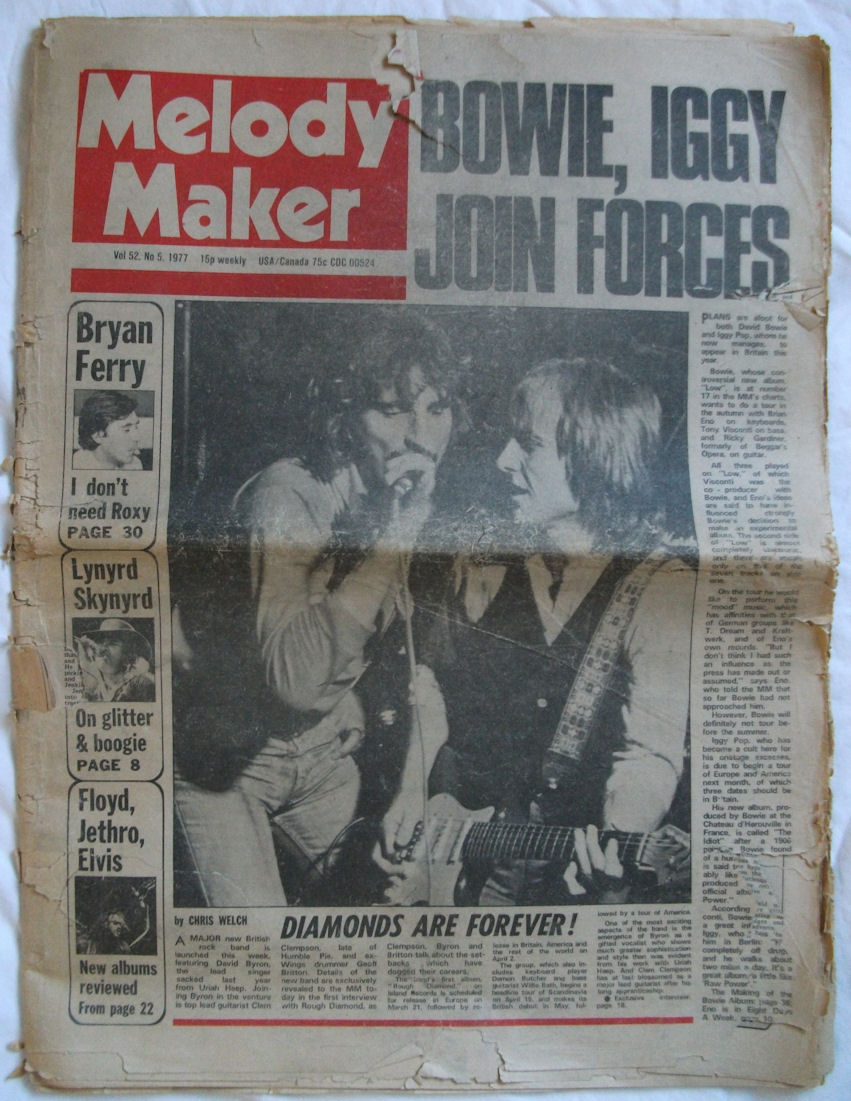
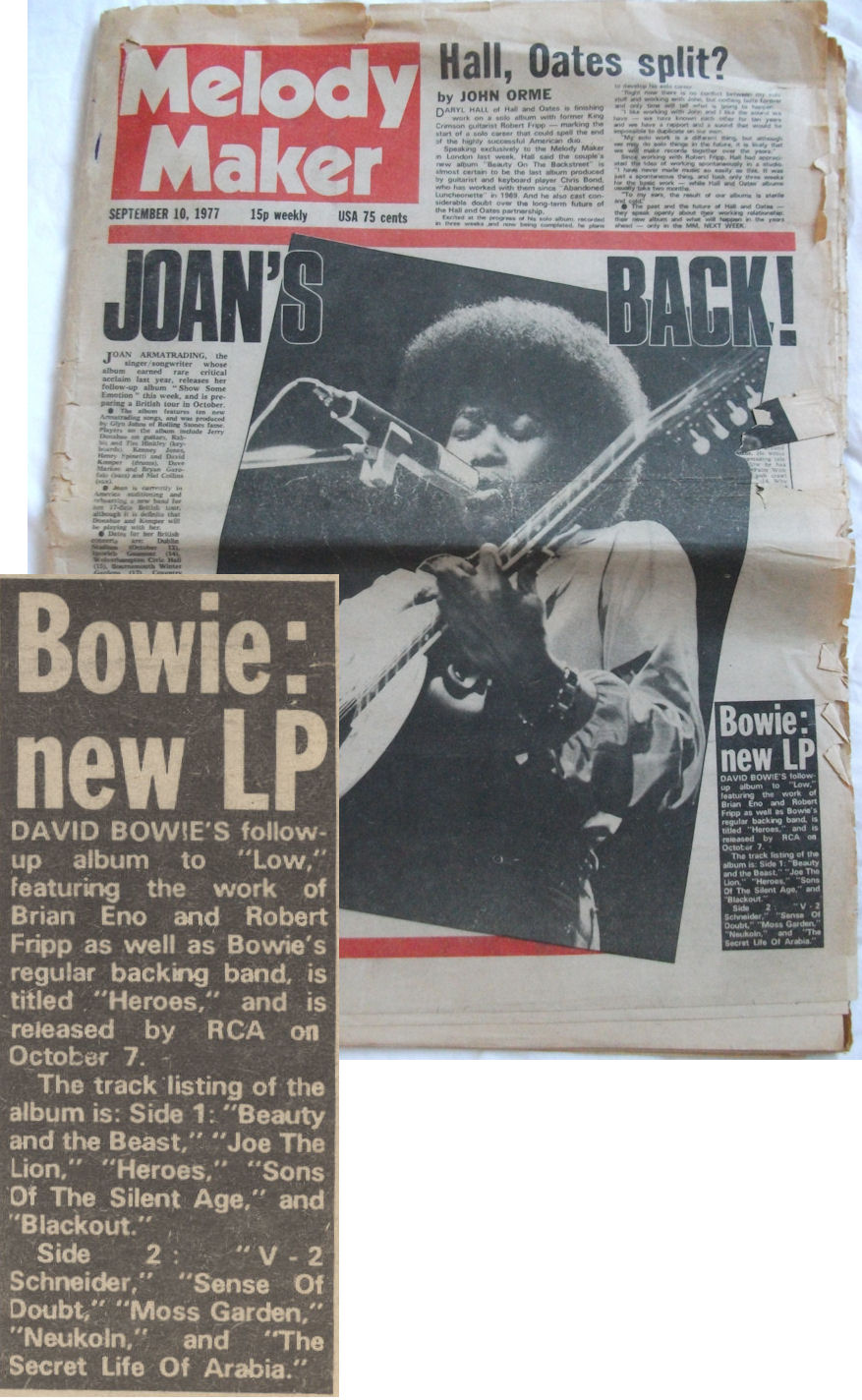
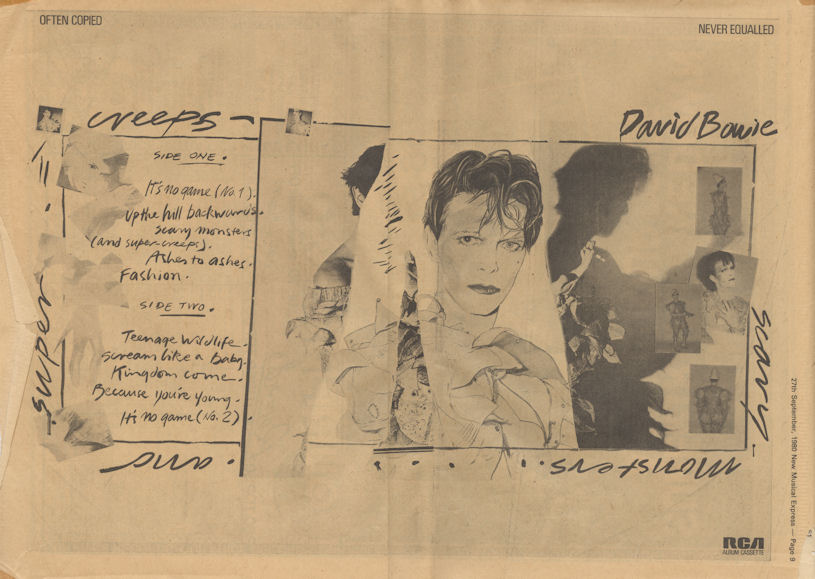
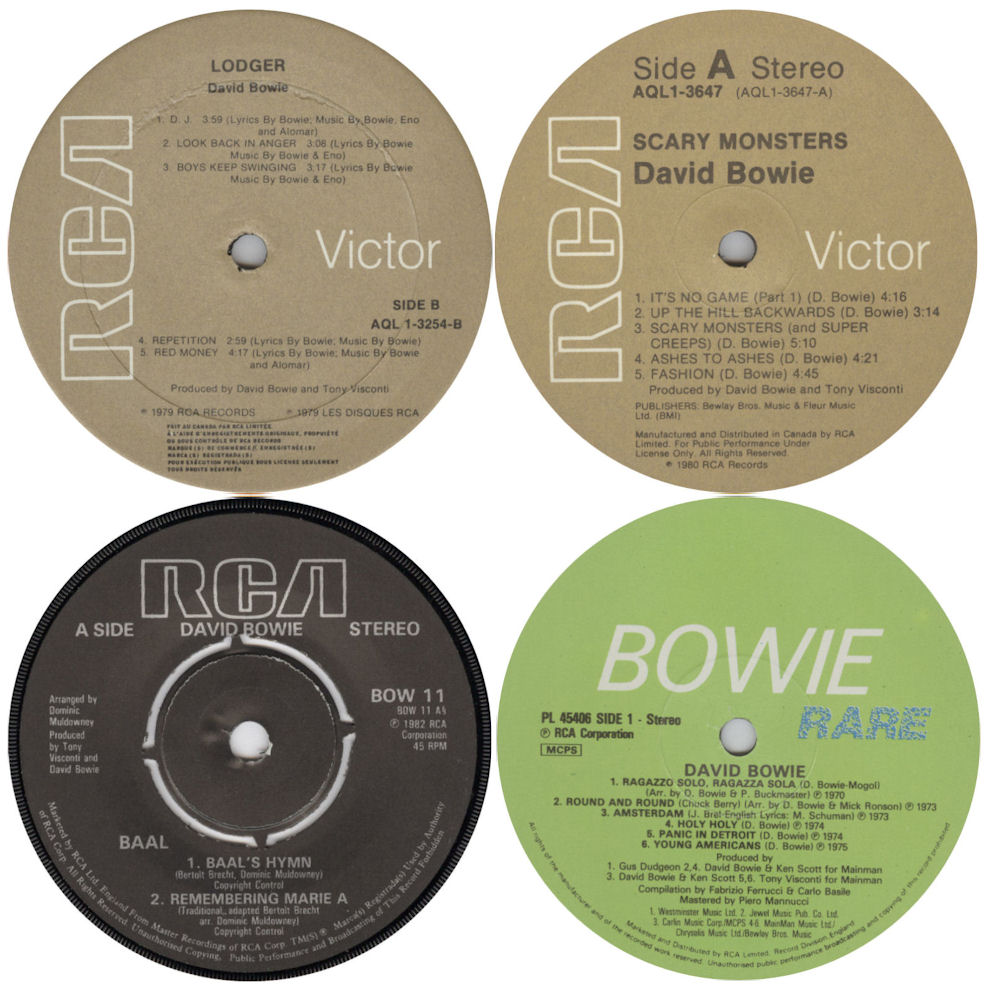
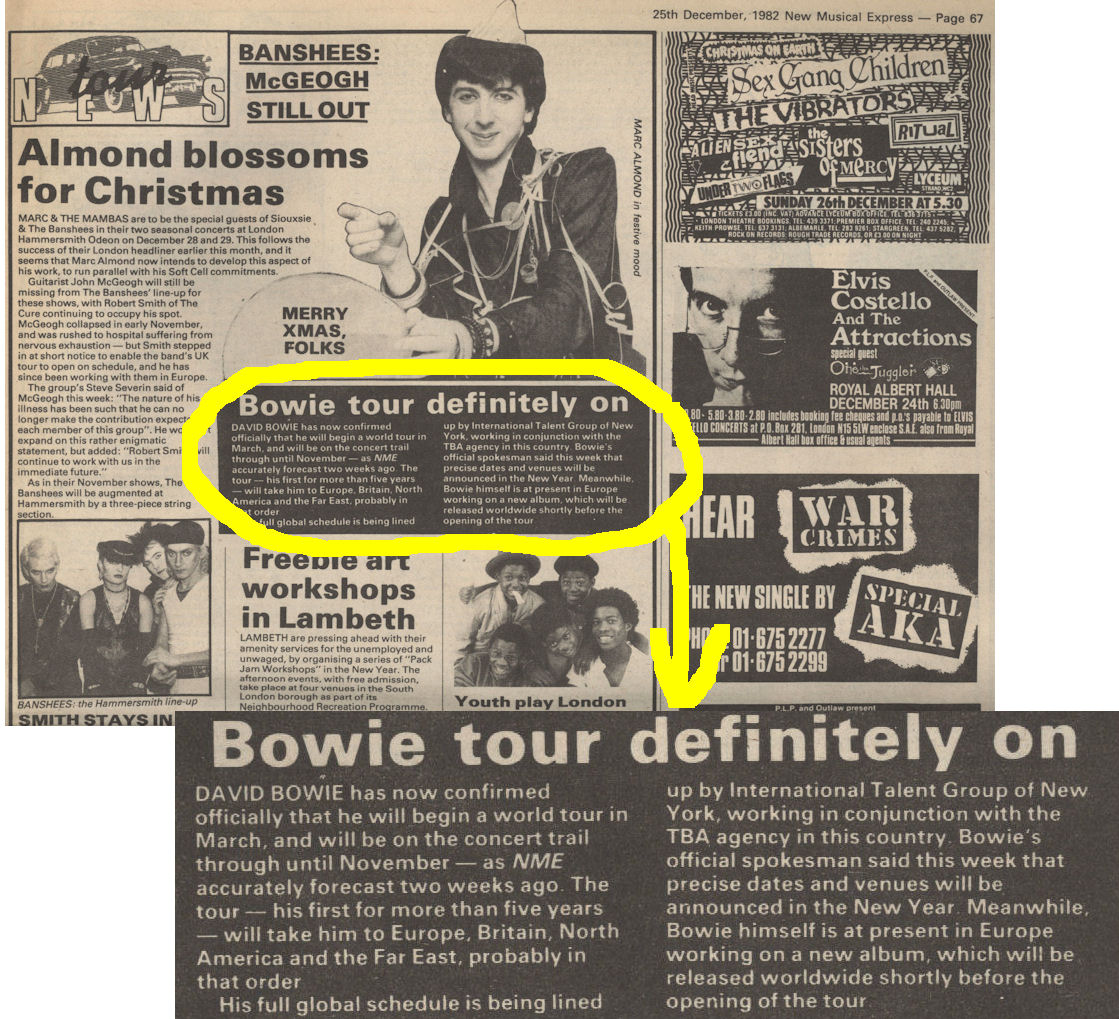
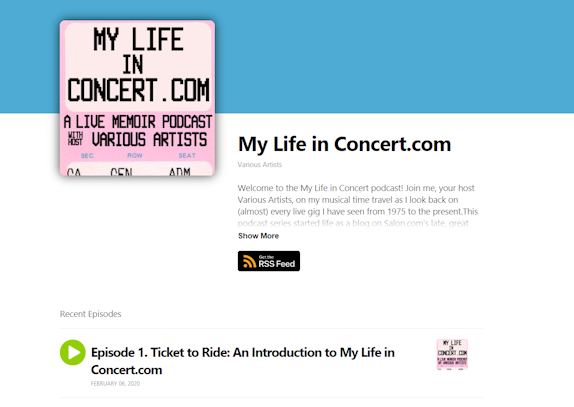

VA, Thank You. You’ve created a spectacular sanctuary here. One to which I will be returning. I haven’t really found the words to articulate how I feel. It’s in the mystical spacey realms where my silence resonates. The funny thing is with the passing of Bowie, I feel Him more than ever. Take care, I know the magnitude of this loss for You. xo
Thanks Christine. It’s going to take some time to process this. Throughout his music, he’ll be with us forever.